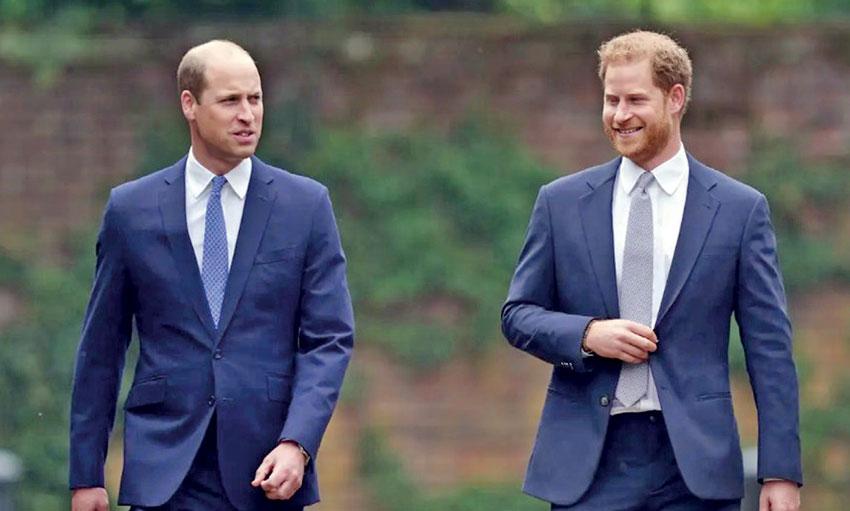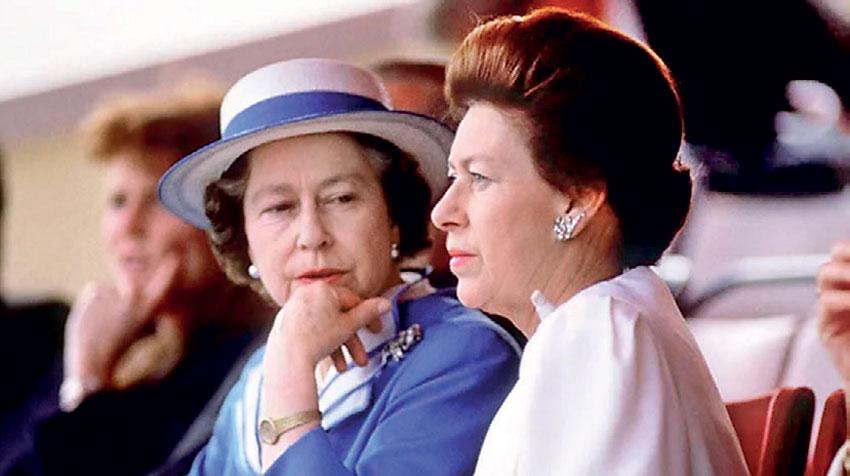Reply To:
Name - Reply Comment

 Like the rest of the world, I probably have had my fill of the headlines of the trials and tribulations of the dynamics between the two British royal siblings. As a mom of boys, however, I must admit that I find the Harry-William split particularly heartbreaking, despite how common an occurrence their estrangement actually is. Two brothers, prior to getting married, are often the best of pals, and then the wives come in and somehow, a chasm appears between the siblings. This commonly occurring pattern is referred to, in Hindi, as a “ghar, ghar ki kahaani,” the story of everyone’s home.
Like the rest of the world, I probably have had my fill of the headlines of the trials and tribulations of the dynamics between the two British royal siblings. As a mom of boys, however, I must admit that I find the Harry-William split particularly heartbreaking, despite how common an occurrence their estrangement actually is. Two brothers, prior to getting married, are often the best of pals, and then the wives come in and somehow, a chasm appears between the siblings. This commonly occurring pattern is referred to, in Hindi, as a “ghar, ghar ki kahaani,” the story of everyone’s home.
By contrast, it seems sisters tend to keep their closeness intact, despite what squabbles they might endure. Come to think of it, in terms of the British royal family itself, Queen Elizabeth and her sister, Princess Margaret, apparently had their share of jealousies, but interestingly, remained as close as ever until the end. Calling each other regularly, confiding in one another, traveling together, sisters’ relationships are typically not disrupted by the addition of brothers-in-law. However, generally speaking, post-marriage brothers, more often than not, disappear from one another’s innermost circles.
Of course, I am grossly generalizing, based on what I have observed in many families in South Asia, and also across the world. There are also countless counterexamples of heartwarming bromances which are sustained for life. In fact, before any inciters read into this, there are so many beautiful ones in our own immediate and extended families, touch wood, which give me great hope for my own boys’ long-term relationship.

That said, one never knows what the next generation will bring and it is this specific concern about gen Alpha boys that prompts my ruminations. As we move forward in a world rife with mental health issues, we should normalise men having continued, independent friendships with their brothers, and if their wives get along, that’s a bonus. In my case, I am very grateful for my (many!) sisters-in-law many of whom have been my greatest sources of support and affection.
That said, not all women (or men) are meant to be best friends, and it is an unrealistic and unfair assumption that two sisters-in-law will be. Much has been documented about women being pitted against each other in the past,but I am hopeful that a younger generation will be less likely to fall into such a trap, perpetuated by society and social media. Who is prettier? Who is smarter? Who is more popular? Currently, women are increasingly demanding equality in the workplace for their fellow female colleagues, stressing the importance of lifting each other up; hopefully this will continue to extend to the home front.
Just to be clear, I am certainly not laying the blame of failing bromances squarely on women’s shoulders. Actually, I would like to highlight the lack of honest conversations to iron out misunderstandings between the men as more of the issue. Many of the sisters I know have epic fights, but also know how to make up, and “forgive and forget.” On the other hand, as a result ofbeing habitually swept under the rug, trivial problems between brothers often end up manifesting into deeply embedded wounds, some of which unfortunately develop into generational divides.
When raising boys, the onus is on all of us, not only parents, but also society-at-large, to teach boys to express and share their emotions, without the stigma of it being seen as a “threat” to their masculinity. We should make it a commonplace practice for men to speak to their brothers candidly and sincerely. Shouldn’t they admit when they are hurt and work through those disagreements? Shouldn’t they be able to cultivate their independent relationships with each other? Shouldn’t men also develop the ability to trust and lean on their brothers for emotional support?
The mental health crisis is a pandemic of its own, and as a mom of boys, I am especially concerned. As we push for a world where men can let their emotional guard down, we must make sure that they have a solid support structure in place to catch them when they fall.